
“Evidence of Possibility” is a two-person exhibition by regional artists, Mark King and Rodell Warner. Mark King is a Barbadian interdisciplinary artist working in photography, installation, fashion, and sculpture, and Rodell Warner is a Trinidadian artist working primarily in new media and photography, whose works assume various forms in a process of exploration and rediscovery. Together, King and Warner present the “evidence of possibility”, pushing each other past the boundaries of their respective practices at the intersection of fine art, research, and technology. This exhibition features AI-generated images on aluminum, ceramic sculptures, and textiles.
King and Warner both view this exhibition as a “presentation of a plethora.” Collaborating through the exchanging of ideas and notes, both artists engage technology at its most advanced state and its rudimentary form to convey the relationship between humanity, innovation, and process. This exhibition–which can be seen as the contemporary descendant of the classical “Wunderkammer”–is a manifestation of curiosity, play, and new ways of archive-making. For this exhibition, his second at TERN gallery, Warner collaborated with AI software to create a fictitious archive of an alternative history of the Caribbean. He posed the central question: “What if?” and allowed this to lead him into a technologically-imagined space. What if persons from the African diaspora came by their own will to the Caribbean, co-existed with the Indigenous people, and all benefited from the land and grew in wealth? How would this alternative history be visualized in the contemporary archive? Warner shared, “What would their lives look like? So I started imagining, instead of the clothes that you usually see them wearing in extant historical records, what could or would their fashion look like?” He prompted the software “to generate suits and dresses, headdresses and jewelry” for these people with materials that he believed would be found in their immediate environment. These amalgamations of landscapes, environments, and people become grotesque yet beautiful possibilities that have been rendered onto small 5 x 5-inch aluminum plates. The audience can also expect to see more iterations of Warner’s video prints from his new series, “Terraria,” which are encased plant life found in the regional terrain.
“Evidence of Possibility” is Mark King’s first exhibition with TERN. No stranger to the Bahamian art scene–having spent formative childhood years here, where he maintained personal ties–he will exhibit a variety of works “to encourage dialogue around the relationship between everyday artifacts and humanity. The coded works in this exhibition center themes of migration, fractal geometry, and provenance.” King asks us to consider the interconnectivity of design, artifacts and space. He also asks us to rethink what we deem as disparate and to look closer at how “design objects helps us understand the world around us.” The German stork is a recurring motif as a symbol of our relationship to the surrounding environment and how that informs our extended cognition. While there should not be a link between Barbados Sea Island cotton, binoculars, and fractal tiles, King presents these junctions in the form of ceramic sculptures, “wearable art” and textile-based forms that explore how the natural world informs design and how, in turn, design informs our own movement through the world. This exhibition is a product of an ongoing dialogue between King and Warner and their admiration for each other’s practice.
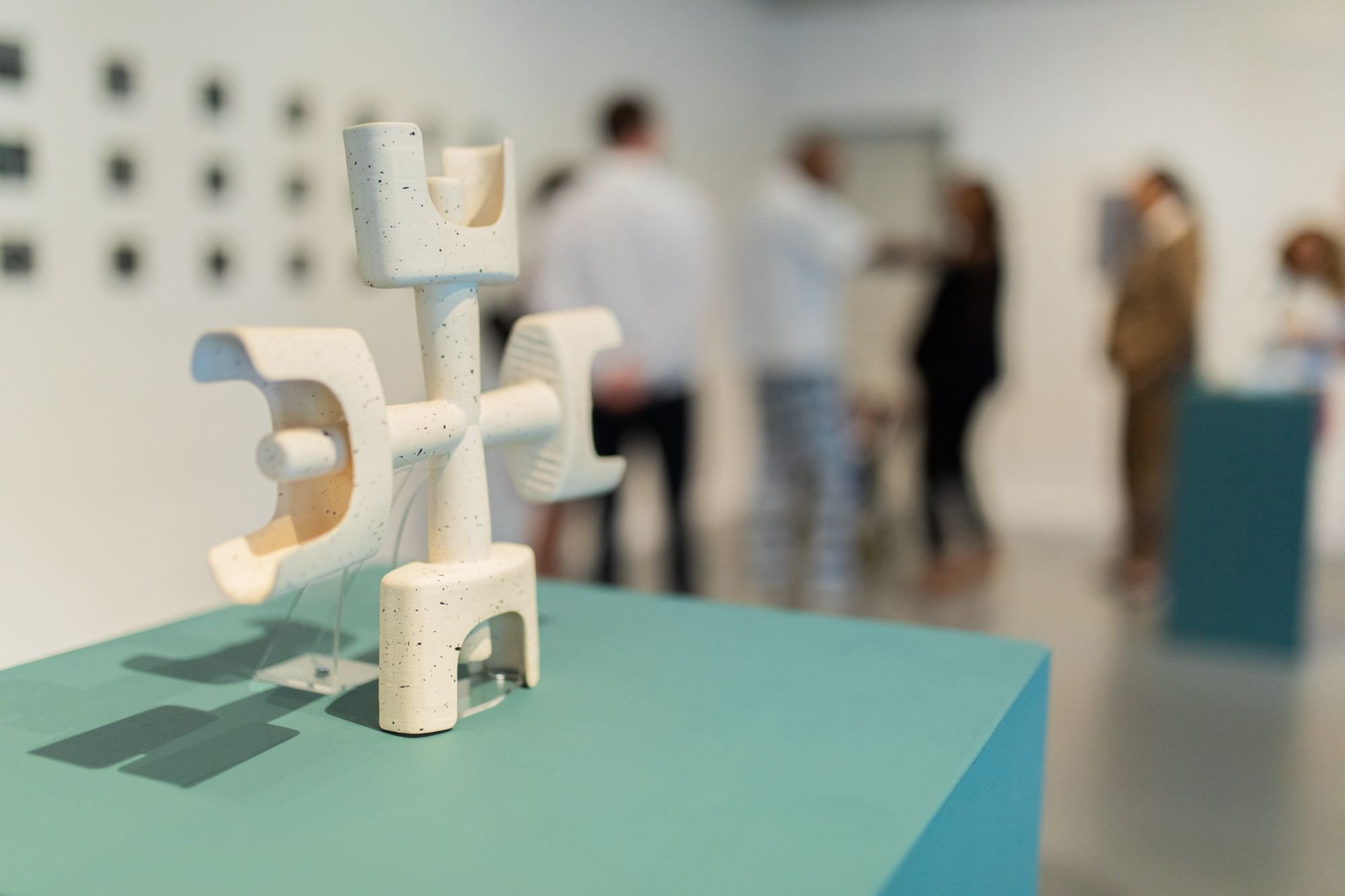
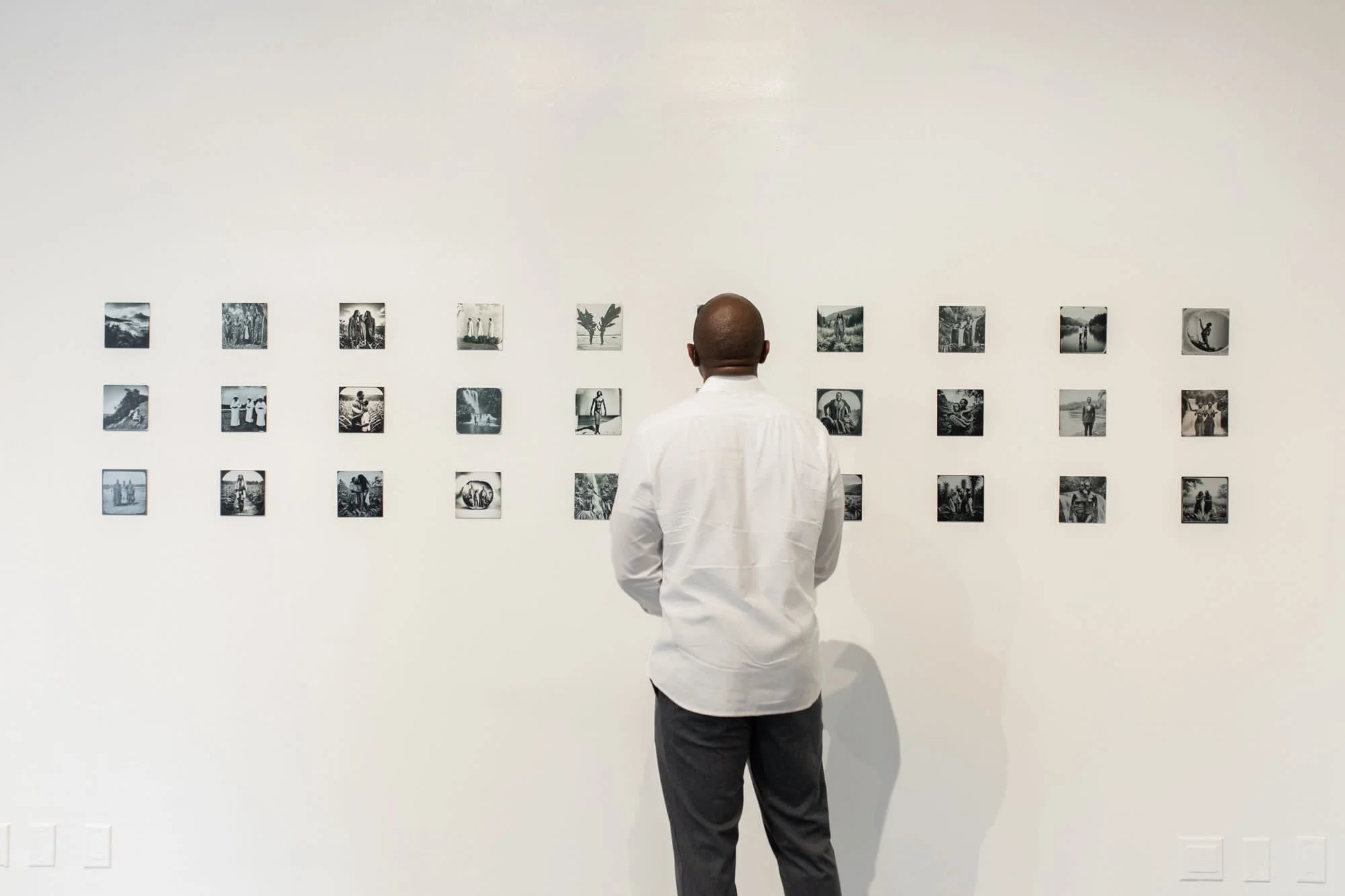
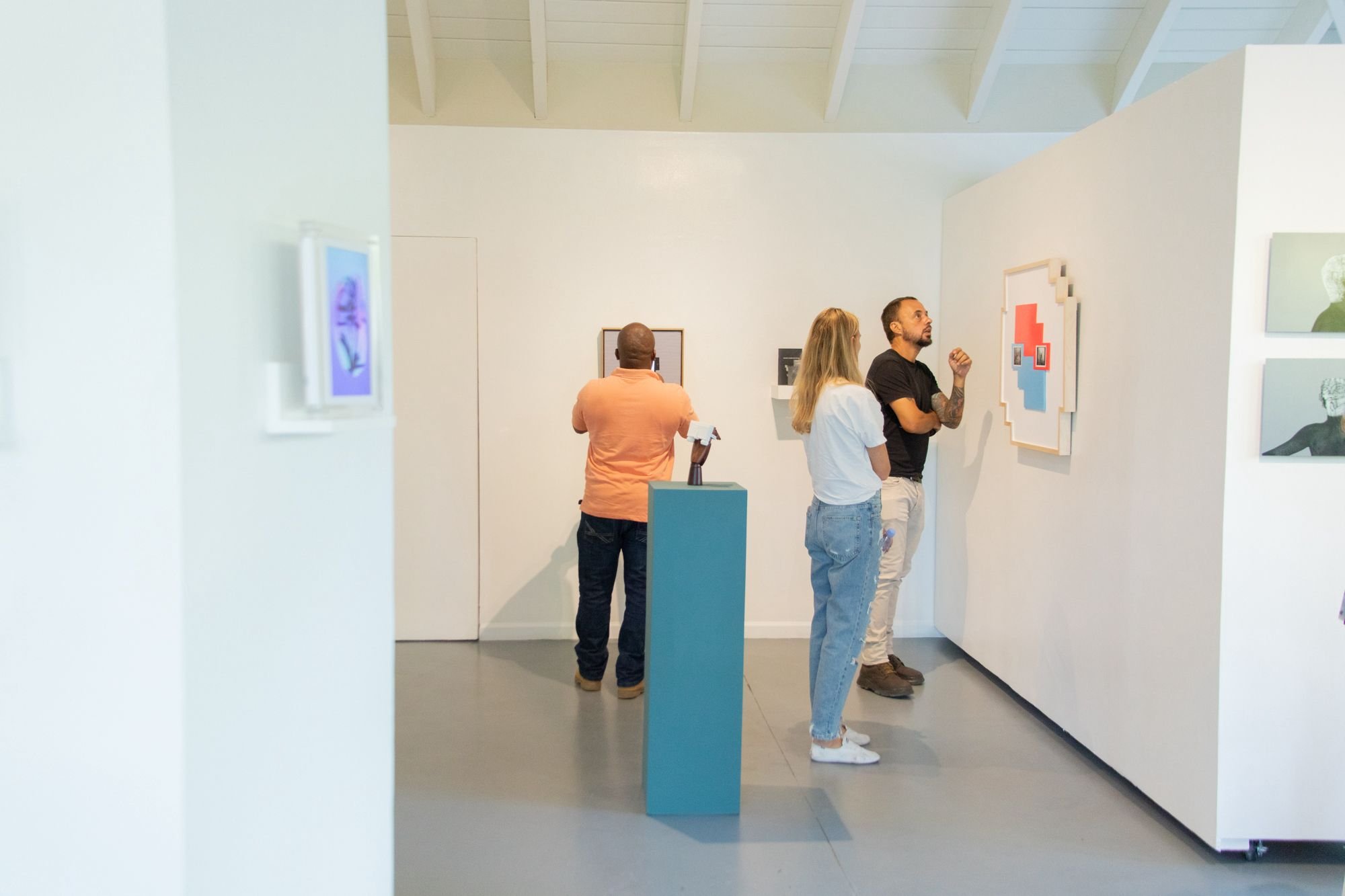
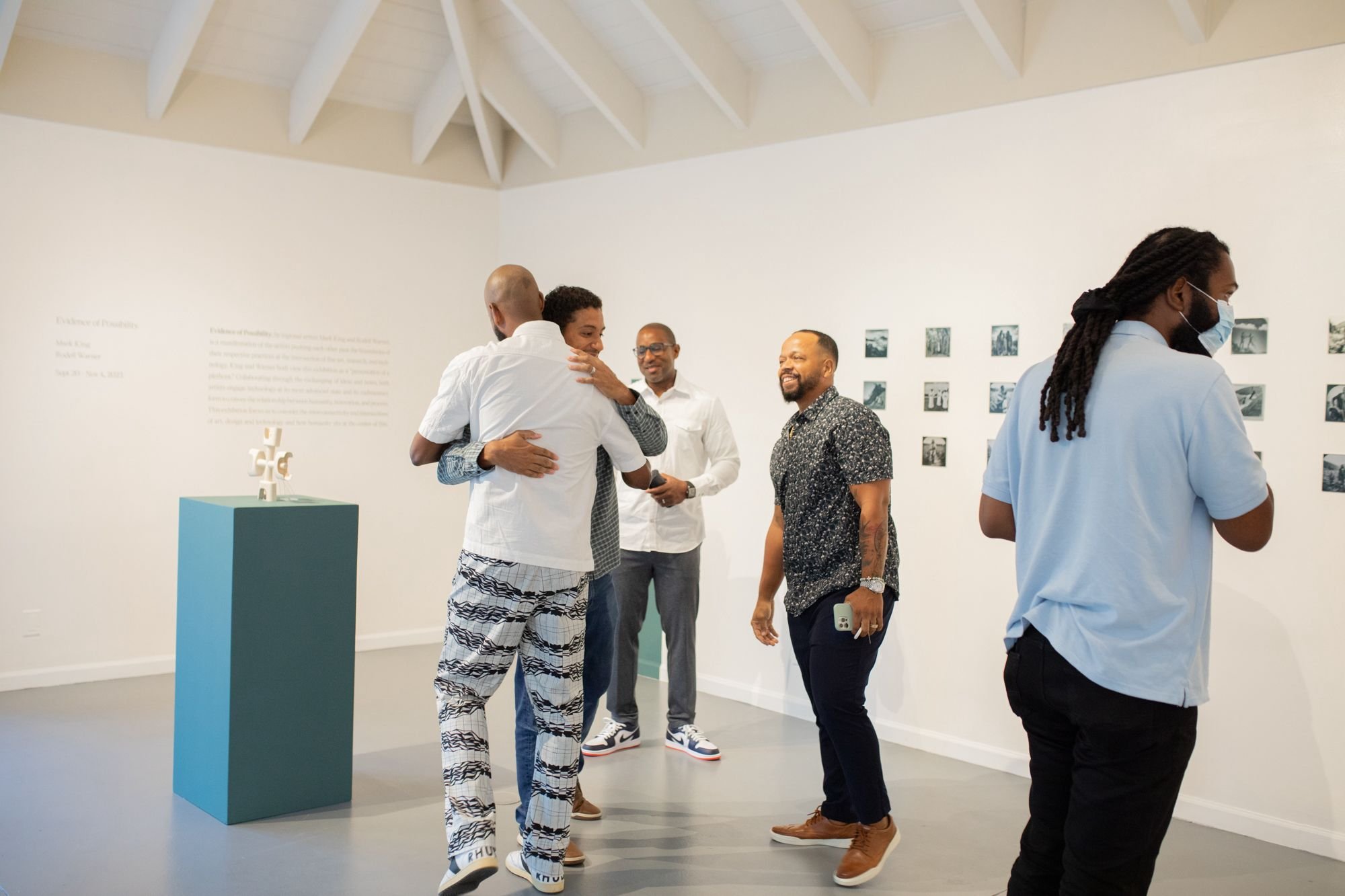
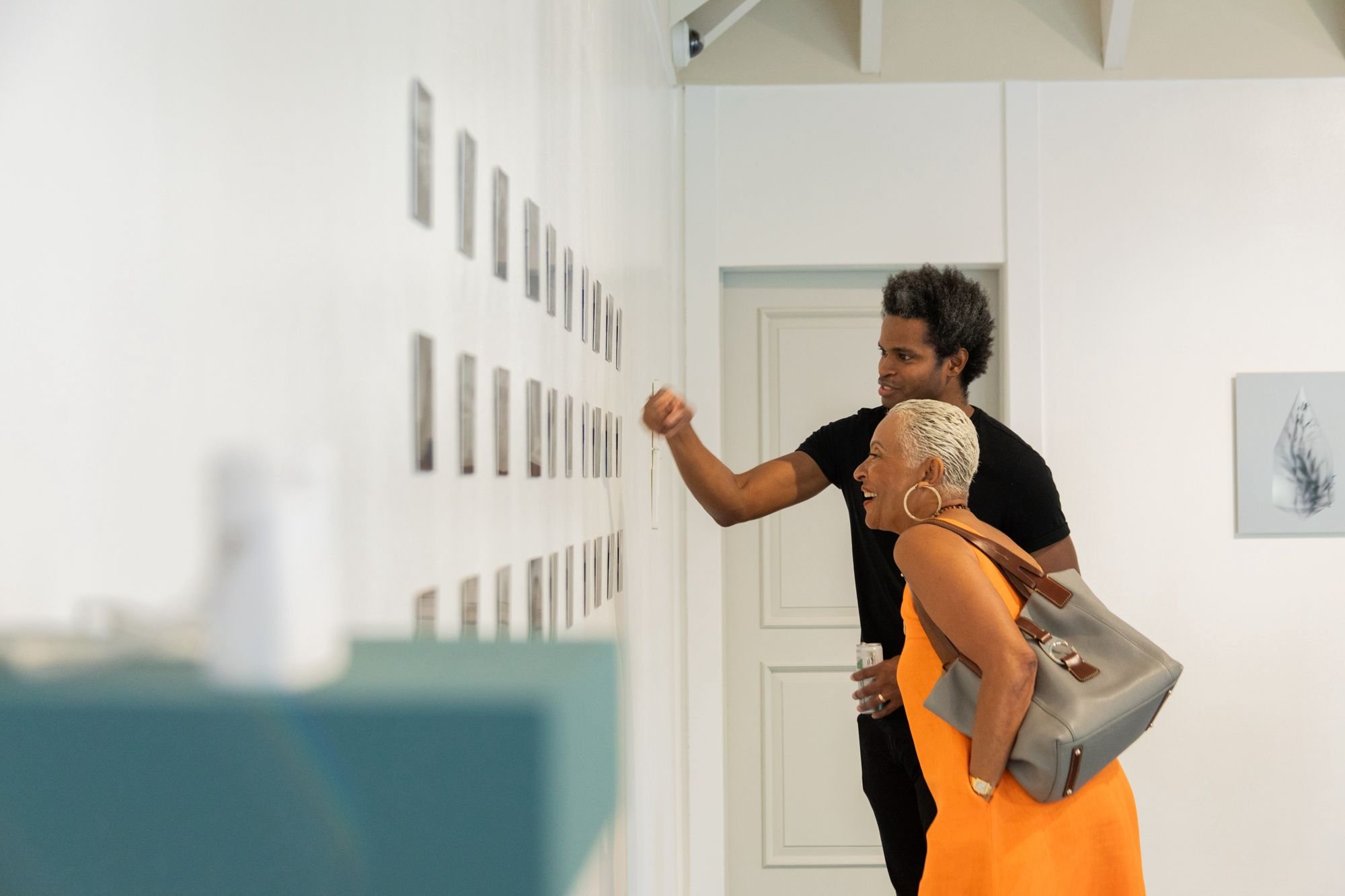
Mark King
Mark King is Barbadian interdisciplinary artist working in photography, installation, fashion, and sculpture. King’s artwork aims to encourage dialogue around the relationship between everyday artifacts and humanity. The coded works in this exhibition play with wide-ranging themes such as bird migration, fractal geometry, and provenance.
Rodell Warner
Rodell Warner is a Trinidadian artist working primarily in new media and photography whose works assume various forms in a process of exploration and rediscovery. He harnesses facets of new media, digital media, and photography, creating unique patterns and projections that have become key characteristics in some aspects of his artistic production.
